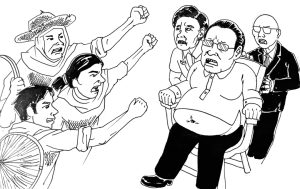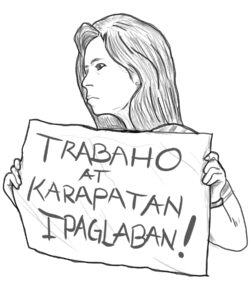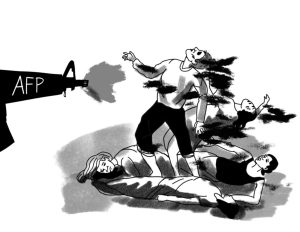Exploitation and job massacres in the garments industry


The reactionary state cannot hide the jobs crisis amid relentless retrenchments in the country. Last July, at least 4.6 million Filipinos were reported unemployed, underemployed or “discouraged” to find a job. This crisis is stark in the export processing zones (EPZ), especially in the clothes manufacturing subsector.
In September alone, the Confederation of Wearable Exporters of the Philippines (CONWEP) said 6,000 workers from clothing factories in Bataan and Cebu were laid off. They add to the 10,000 retrenched from the subsector in 2022. They work in large companies producing garments for well-known brands such as Adidas, Juicy Couture, Gap and others.
CONWEP attributes the layoffs to the decline in the demand for clothing and other textile products (shoes, bags), especially in the US which is the main market of Filipino-sewn products. It estimates 8%-10% of the 270,000 workers in the subsector will likely lose their jobs due to “weak” global demand. Reactionary state officials, on the other hand, blame the “closures” on the “high minimum wage” of workers.
One of these workers was Lisa, 45. Before she was retrenched in 2022, she worked for eight years as a seamstress in a factory in Cavite. She sew clothing products for US companies Candies, Macy, Juicy Couture and others. She was among more than 1,000 laid-off workers, half of whom were women. They received no separation pay nor benefits when the factory was shut down without notice.
During Lisa’s entire employment period, her salary increased by only ₱86 from ₱315 in 2017 to ₱401 in 2022 (an average of ₱10.75 per year). She did not receive any benefits except for the minimum wage set by the state.
In the factory, workers like her toil without rest. They are made to work faster to avoid overtime beyond two hours. Workers buy and bring their own clip-fans to bear the lack of ventilation and heat in the factory. They have no regular breaks except for lunch.
Lisa was a regular worker and was paid daily but required to fulfill a quota depending on the production “line” (sewing sleeves, collar and so on). The quota was usually set at 7,000 items per day. When it is not reached, she is reprimanded along with others on her “line”.
The capitalist claimed financial losses to justify laying off workers. But the company didn’t shut down. As of 2023, vacant positions in its factories, including in Cavite and Las Piñas, were still posted on the internet.
The union to which Lisa belongs resisted and filed a lawsuit against illegal layoffs and union busting. These cases are still pending. Meanwhile, Lisa and her coworkers remain jobless 11 months since being laid off.
In the Bataan and Cebu layoffs, foreign capitalists and local officials cannot deny that the companies did not close down. They simply moved their operations to another country where production costs are lower.
As CONWEP insisted in 2022, global demand for clothing has not steadily declined. In fact, the Philippines subsector’s exports grew by 14% in the first half of the year, from $1.009 billion to $1.155 billion.
In the US, demand for garments is expected to grow by 2.82% annually over the next five years. Analysts say the decline in demand due to the pandemic-induced supply and transportation problems was “short-lived.” They are “optimistic” that the subsector will grow due to online shopping and the increase in the demand from new markets.
It is inherent for foreign capitalists to “drop” Filipino workers in their desire to reduce production costs and amass greater profits. Companies are virtually giving workers two choices: be laid off, or endure slave-like salaries and inhuman working conditions. Workers’ efforts to uplift their social standing, including seeking fair wages and unionizing, are met with illegal layoffs, union busting and illegal lock-outs.










